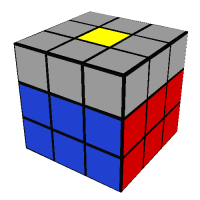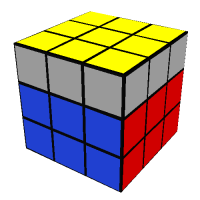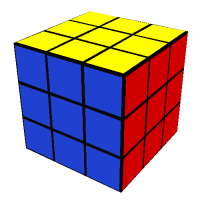Algorithms
Here you will find big long lists of algorithms for the sections of the CFOP method. I have taken care to choose algorithms that I think are easy to both memorise and perform, and I have arranged them in an order that I think facilitates learning. While I have also endeavoured to ensure they are error free, if you do spot any mistakes you can leave a comment below or send me an email.
F2L
If you've read the How to be better at F2L section of my speedcubing guide, you'll know exactly how I feel about relying on this table instead of intuition. I have presented them anyway so you can see optimal solutions to all the F2L cases.
1. Basic cases
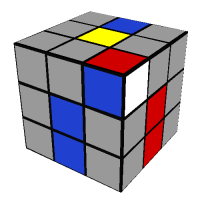 R U R'
R U R'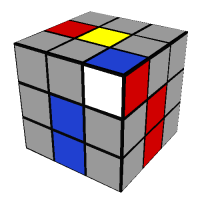 F' U' F
F' U' F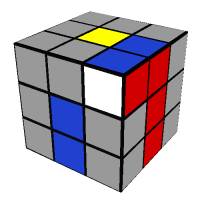 U R U' R'
U R U' R'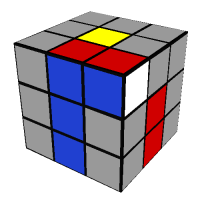 U' F' U F
U' F' U F2. Corner and edge in top
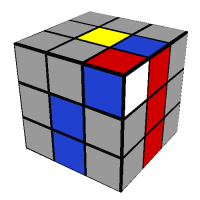 (U' R U') (R' U R) U R'
(U' R U') (R' U R) U R'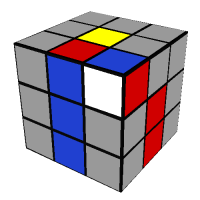 (U F' U) (F U' F') U' F
(U F' U) (F U' F') U' F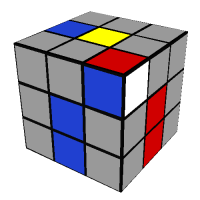 (U' R U) (R' U R) U R'
(U' R U) (R' U R) U R'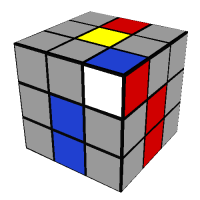 (U F' U') (F U' F') U' F
(U F' U') (F U' F') U' F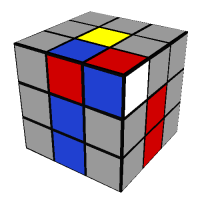 d (R' U2 R) d' (R U R')
d (R' U2 R) d' (R U R')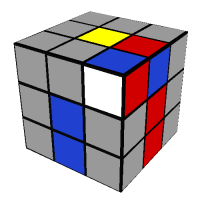 U' (R U2 R') d (R' U' R)
U' (R U2 R') d (R' U' R) 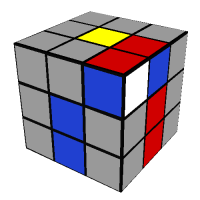 (R U' R' U) d (R' U' R)
(R U' R' U) d (R' U' R) (F' U F U') d' (F U F')
(F' U F U') d' (F U F')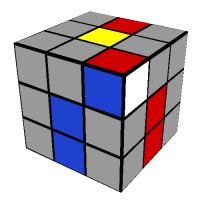 (U F' U2 F) (U F' U2 F)
(U F' U2 F) (U F' U2 F)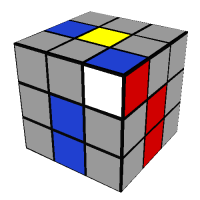 (U' R U2 R') (U' R U2 R')
(U' R U2 R') (U' R U2 R')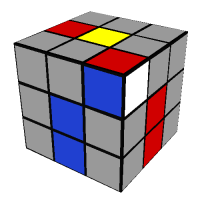 (U F' U' F) (U F' U2 F)
(U F' U' F) (U F' U2 F)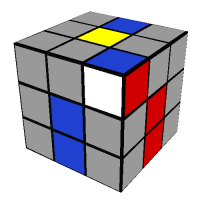 (U' R U R') (U' R U2 R')
(U' R U R') (U' R U2 R')3. Corner pointing up, edge in top
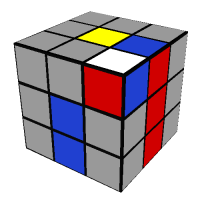 (R U2 R' U') (R U R')
(R U2 R' U') (R U R')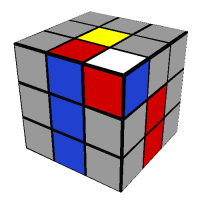 (F' U2 F U) (F' U' F)
(F' U2 F U) (F' U' F)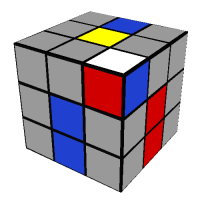 (U R U2 R') (U R U' R')
(U R U2 R') (U R U' R')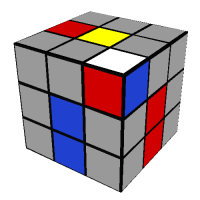 (U' F' U2 F) (U' F' U F)
(U' F' U2 F) (U' F' U F)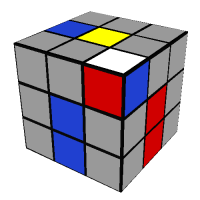 U2 (R U R' U) (R U' R')
U2 (R U R' U) (R U' R')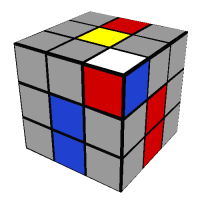 U2 (F' U' F U') (F' U F)
U2 (F' U' F U') (F' U F)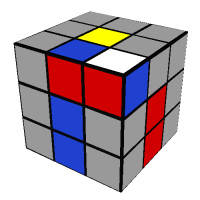 (R U R' U') U' (R U R' U') (R U R')
(R U R' U') U' (R U R' U') (R U R')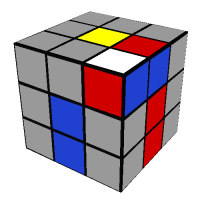 y' (R' U' R U) U (R' U' R U) (R' U' R)
y' (R' U' R U) U (R' U' R U) (R' U' R)4. Corner in top, edge in middle
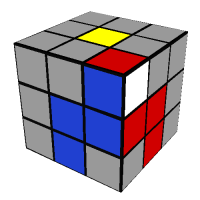 (U F' U F) (U F' U2 F)
(U F' U F) (U F' U2 F)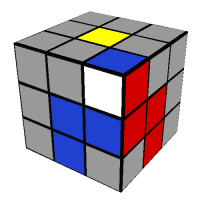 (U' R U' R') (U' R U2 R')
(U' R U' R') (U' R U2 R')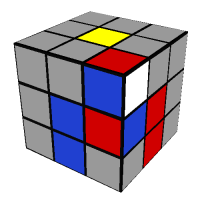 (U F' U' F) (d' F U F')
(U F' U' F) (d' F U F')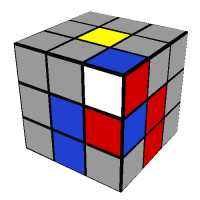 (U' R U R') (d R' U' R)
(U' R U R') (d R' U' R)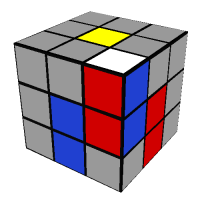 (R U' R') (d R' U R)
(R U' R') (d R' U R)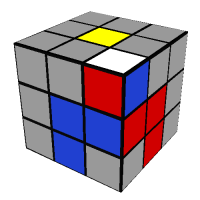 (R U R' U') (R U R' U') (R U R')
(R U R' U') (R U R' U') (R U R')5. Corner in bottom, edge in top
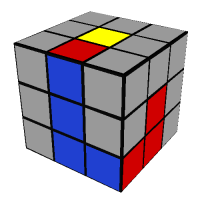 (U R U' R') (U' F' U F)
(U R U' R') (U' F' U F)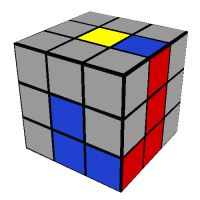 (U' F' U F) (U R U' R')
(U' F' U F) (U R U' R')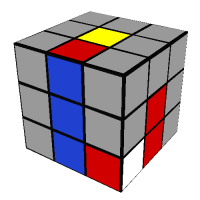 (F' U F) (U' F' U F)
(F' U F) (U' F' U F)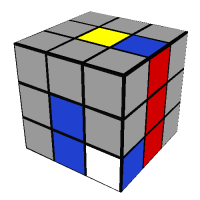 (R U' R') (U R U' R')
(R U' R') (U R U' R')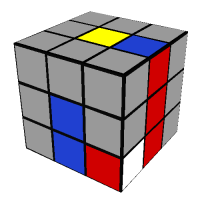 (R U R') (U' R U R')
(R U R') (U' R U R')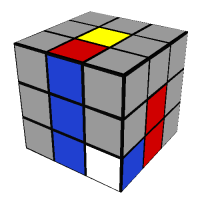 (F' U' F) (U F' U' F)
(F' U' F) (U F' U' F)6. Corner in bottom, edge in middle
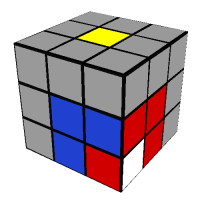 (R U' R' U) R U2 R' (U R U' R')
(R U' R' U) R U2 R' (U R U' R')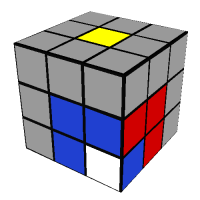 (R U' R' U') (R U R' U') (R U2 R')
(R U' R' U') (R U R' U') (R U2 R')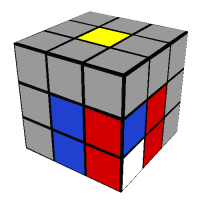 (R U R' U') (R U' R') U d (R' U' R)
(R U R' U') (R U' R') U d (R' U' R)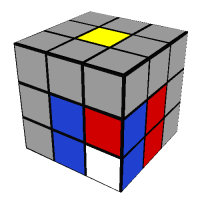 (R U' R') d (R' U' R U') (R' U' R)
(R U' R') d (R' U' R U') (R' U' R)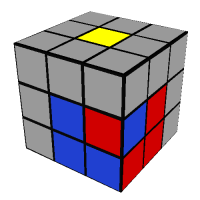 (R U' R' d R' U2 R) (U R' U2 R)
(R U' R' d R' U2 R) (U R' U2 R)OLL
The OLL algorithms here are numbered using the accepted order found on the speedsolving.com wiki (and elsewhere online), so you can always find an alternative to a specific algorithm should you wish. I have chosen these ones because they heavily use three different triggers, which I feel allows for easier memorisation. Simply learn the three triggers, and you nearly know most of the algorithms already. For the algorithms that don't use these triggers, I have bracketed them to show how I might perform them in sections.
You can sort this list by shape, trigger, and number order, to facilitate easy finding of a specific situation and memorising of the whole list.
1. (R U R' U')
2. (R' F R F')
3. (R U R' U)
Others
All algorithms
Crosses
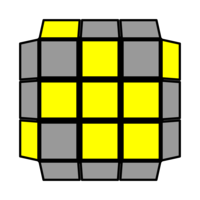 (R' U2 R) U (R' U R)
(R' U2 R) U (R' U R)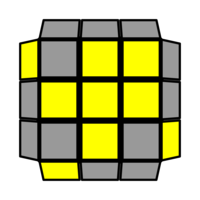 (R U2 R') U' (R U' R')
(R U2 R') U' (R U' R')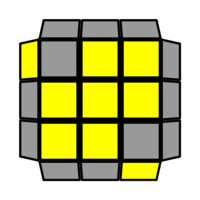 F' (r U R' U') (r' F R)
F' (r U R' U') (r' F R)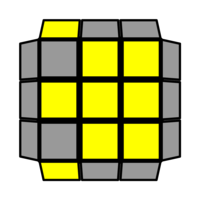 (r U R' U') (r' F R F')
(r U R' U') (r' F R F')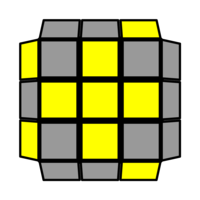 R U2 (R2' U' R2 U') (R2' U2 R)
R U2 (R2' U' R2 U') (R2' U2 R)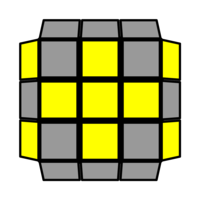 (R U R') U (R U' R') U (R U2 R')
(R U R') U (R U' R') U (R U2 R')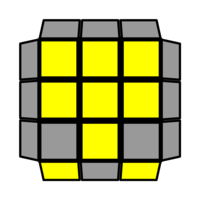 R2 D (R' U2 R) D' (R' U2 R')
R2 D (R' U2 R) D' (R' U2 R')Dots
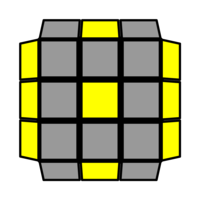 (R U2 R') (R' F R F') U2 (R' F R F')
(R U2 R') (R' F R F') U2 (R' F R F')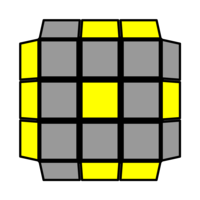 F (R U R' U') F' f (R U R' U') f'
F (R U R' U') F' f (R U R' U') f'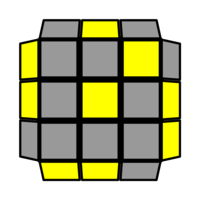 f (R U R' U') f' U F (R U R' U') F'
f (R U R' U') f' U F (R U R' U') F'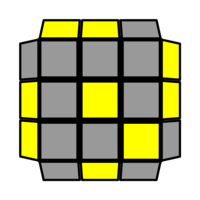 f (R U R' U') f' U' F (R U R' U') F'
f (R U R' U') f' U' F (R U R' U') F'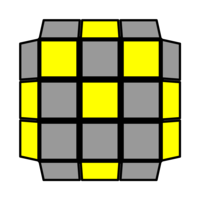 M U (R U R' U') M' (R' F R F')
M U (R U R' U') M' (R' F R F')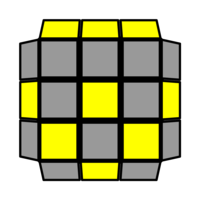 F (R U R' U) y' R' U2 (R' F R F')
F (R U R' U) y' R' U2 (R' F R F')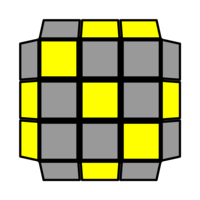 (R U R' U) (R' F R F') U2 (R' F R F')
(R U R' U) (R' F R F') U2 (R' F R F')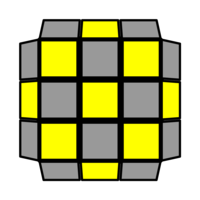 M U (R U R' U') M2 (U R U' r')
M U (R U R' U') M2 (U R U' r')All Corners
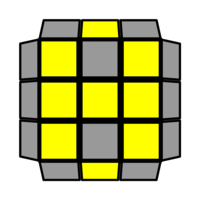 (R U R' U') M' (U R U' r')
(R U R' U') M' (U R U' r')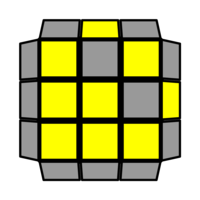 M' U' M U2' M' U' M
M' U' M U2' M' U' MLines
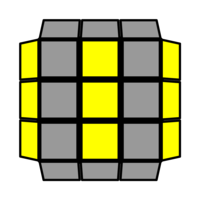 R U2 R2 (U' R U' R') U2 (F R F')
R U2 R2 (U' R U' R') U2 (F R F') (R U R' U) R d' R U' R' F'
(R U R' U) R d' R U' R' F'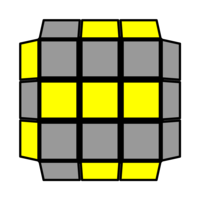 f (R U R' U') (R U R' U') f'
f (R U R' U') (R U R' U') f'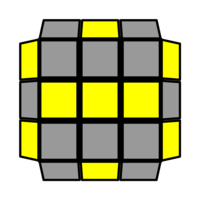 F (R U R' U') R F' (r U R' U') r'
F (R U R' U') R F' (r U R' U') r'Ts
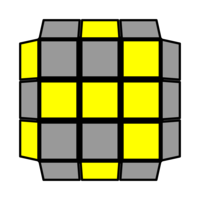 F (R U R' U') F'
F (R U R' U') F'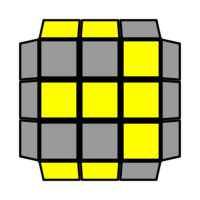 (R U R' U') (R' F R F')
(R U R' U') (R' F R F')Zs
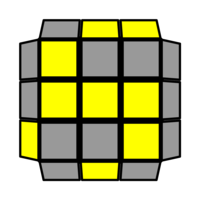 R' F (R U R' U') F' U R
R' F (R U R' U') F' U R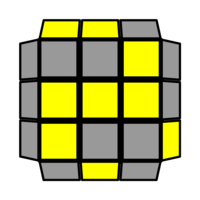 L F' (L' U' L U) F U' L'
L F' (L' U' L U) F U' L'Big Ls
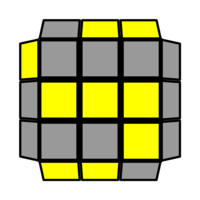 (R' F R) U (R' F' R) y' (R U' R')
(R' F R) U (R' F' R) y' (R U' R')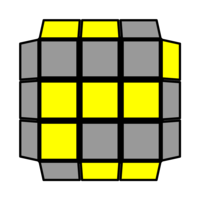 F (U R U' R2) F' (R U R U' R')
F (U R U' R2) F' (R U R U' R')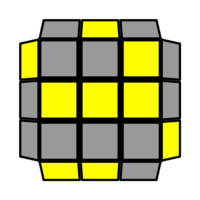 r U r' (R U R' U') r U' r'
r U r' (R U R' U') r U' r'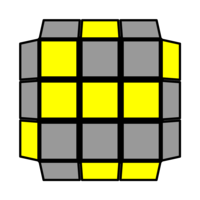 l' U' l (L' U' L U) l' U l
l' U' l (L' U' L U) l' U lCs
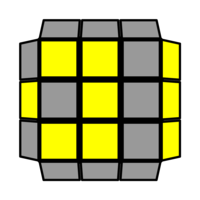 R' U' (R' F R F') U R
R' U' (R' F R F') U R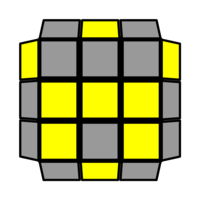 (R U R' U') x D' R' U R U' D x'
(R U R' U') x D' R' U R U' D x'Ws
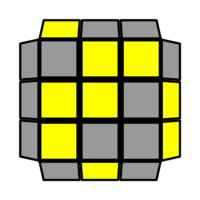 (R U R' U) (R U' R' U') (R' F R F')
(R U R' U) (R U' R' U') (R' F R F')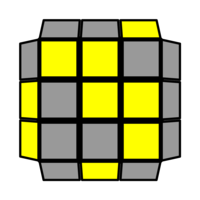 (L' U' L U') (L' U L U) (L F' L' F)
(L' U' L U') (L' U L U) (L F' L' F)Ps
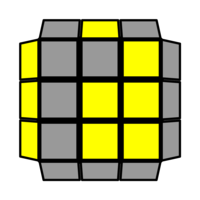 f (R U R' U') f'
f (R U R' U') f'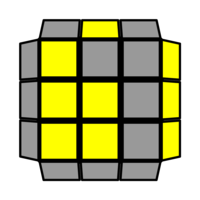 f' (L' U' L U) f
f' (L' U' L U) f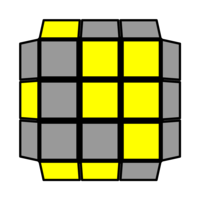 R' U' F U R U' R' F' R
R' U' F U R U' R' F' R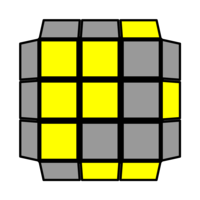 F U R U' F' r U R' U' r'
F U R U' F' r U R' U' r'Squares
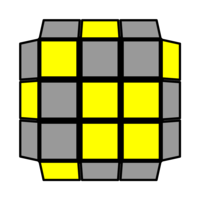 (R U2 R') (R' F R F') (R U2 R')
(R U2 R') (R' F R F') (R U2 R')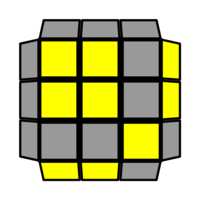 F R' F' R U R U' R'
F R' F' R U R U' R'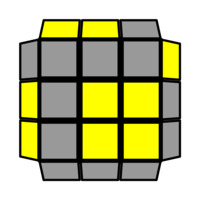 r' U2 (R U R' U) r
r' U2 (R U R' U) r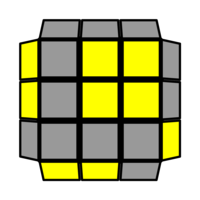 r U2 R' U' R U' r'
r U2 R' U' R U' r'Little Ls
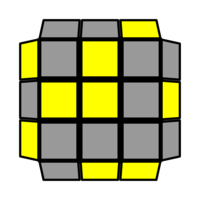 F (R U R' U') (R U R' U') F'
F (R U R' U') (R U R' U') F'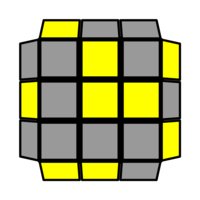 F' (L' U' L U) (L' U' L U) F
F' (L' U' L U) (L' U' L U) F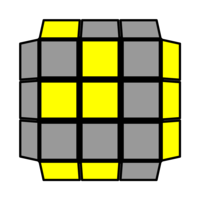 R' F R2 B' R2' F' R2 B R'
R' F R2 B' R2' F' R2 B R'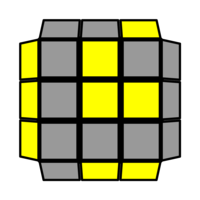 (R' F R' F') R2 U2 y (R' F R F')
(R' F R' F') R2 U2 y (R' F R F')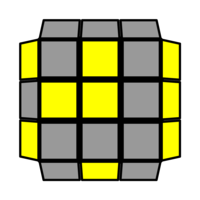 (l' U' L U') (L' U L U') L' U2 l
(l' U' L U') (L' U L U') L' U2 l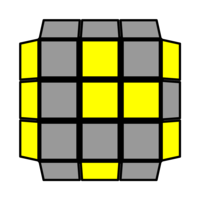 (r U R' U) (R U' R' U) R U2' r'
(r U R' U) (R U' R' U) R U2' r'Other shapes
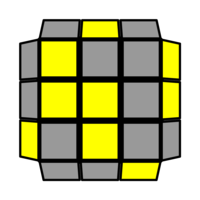 F' (L' U' L U) F y F (R U R' U') F'
F' (L' U' L U) F y F (R U R' U') F'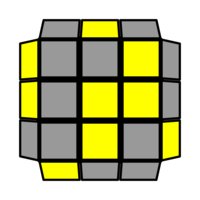 F (R U R' U') F' U F (R U R' U') F'
F (R U R' U') F' U F (R U R' U') F'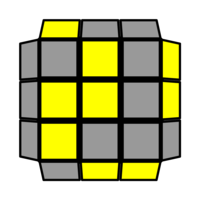 (r U R' U) R U2 r'
(r U R' U) R U2 r'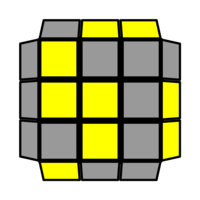 r' U' R U' R' U2 r
r' U' R U' R' U2 r (R U R' U) (R' F R F') R U2 R'
(R U R' U) (R' F R F') R U2 R'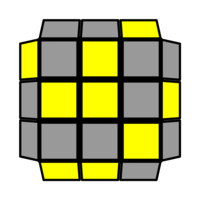 (R U R' U') R' F R2 U R' U' F'
(R U R' U') R' F R2 U R' U' F'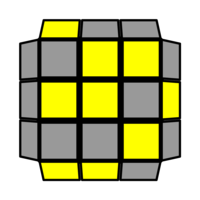 (R U R' U') R U' R' F' U' (F R U R')
(R U R' U') R U' R' F' U' (F R U R')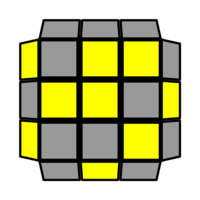 (R' F R F') (R' F R F') (R U R' U') (R U R')
(R' F R F') (R' F R F') (R U R' U') (R U R')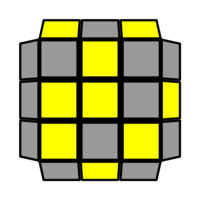 (R U R' U) R U2 R' F (R U R' U') F'
(R U R' U) R U2 R' F (R U R' U') F'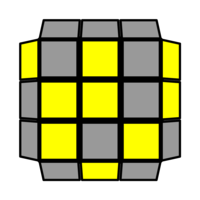 (L F' L' F) L' U2 L d (R U R')
(L F' L' F) L' U2 L d (R U R')PLL
Much like the OLL algorithms, these PLL algorithms are presented with their accepted names. These are often referred to as permutations or perms, e.g. H-perm or Nb-perm.
Edges only
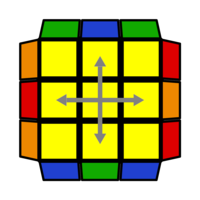 (M2 U M2) U2 (M2 U M2)
(M2 U M2) U2 (M2 U M2)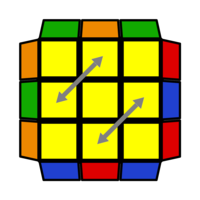 R' U' R2 U (R U R' U') R U R U' R U' R' U2
R' U' R2 U (R U R' U') R U R U' R U' R' U2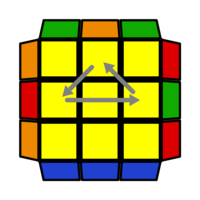 R2 U' (R' U' R) U R U (R U' R)
R2 U' (R' U' R) U R U (R U' R)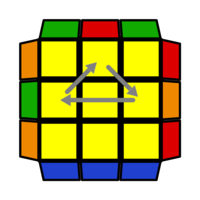 (R' U R' U') R' U' (R' U R) U R2
(R' U R' U') R' U' (R' U R) U R2Corners only
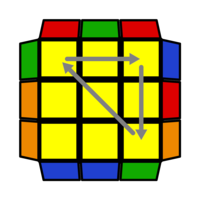 x z' R2 U2 (R' D' R) U2 (R' D R') z x'
x z' R2 U2 (R' D' R) U2 (R' D R') z x'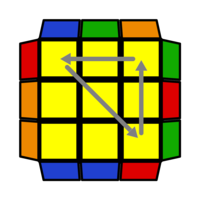 x R2 D2 (R U R') D2 (R U' R) x'
x R2 D2 (R U R') D2 (R U' R) x'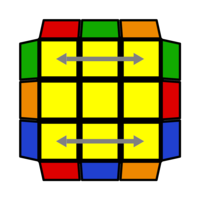 R2 U R' U' y (R U R' U') (R U R' U') (R U R') y' (R U' R2')
R2 U R' U' y (R U R' U') (R U R' U') (R U R') y' (R U' R2')Edges and corners
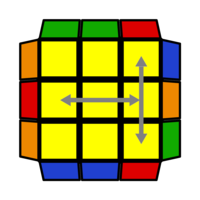 (R U R' U') R' F R2 U' R' U' R U R' F'
(R U R' U') R' F R2 U' R' U' R U R' F'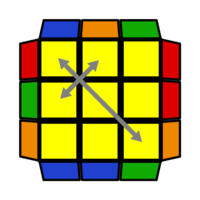 (F R U' R') U' (R U R' F') (R U R' U') (R' F R F')
(F R U' R') U' (R U R' F') (R U R' U') (R' F R F')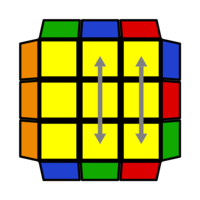 U' (R' U R U') R2 (F' U' F U) x (R U R' U') R2 x'
U' (R' U R U') R2 (F' U' F U) x (R U R' U') R2 x'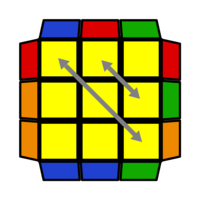 (R' U R' U') y (R' D R' D') R2 y' (R' B' R B R)
(R' U R' U') y (R' D R' D') R2 y' (R' B' R B R)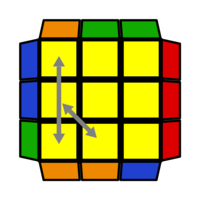 L' U' L F (L' U' L U) L F' L2 U L U
L' U' L F (L' U' L U) L F' L2 U L U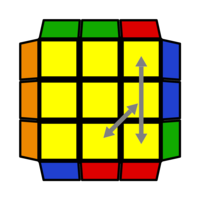 R U R' F' (R U R' U') R' F R2 U' R' U'
R U R' F' (R U R' U') R' F R2 U' R' U'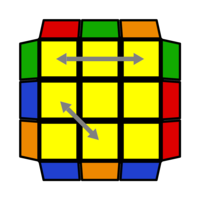 (L U2 L') U2 L F' (L' U' L U) L F L2 U
(L U2 L') U2 L F' (L' U' L U) L F L2 U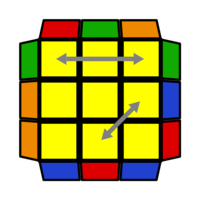 (R' U2 R) U2 R' F (R U R' U') R' F' R2 U'
(R' U2 R) U2 R' F (R U R' U') R' F' R2 U'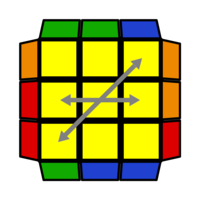 (R U R' U) (R U R' F') (R U R' U') R' F R2 U' R' U2 (R U' R')
(R U R' U) (R U R' F') (R U R' U') R' F R2 U' R' U2 (R U' R')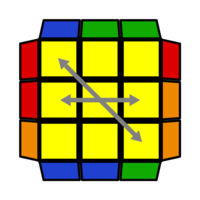 (R' U R U') R' (F' U' F) (R U R' F) R' F' (R U' R)
(R' U R U') R' (F' U' F) (R U R' F) R' F' (R U' R)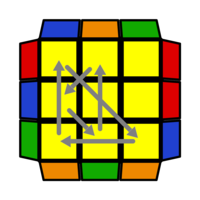 y R2' u (R' U R' U') (R u' R2) y' (R' U R)
y R2' u (R' U R' U') (R u' R2) y' (R' U R)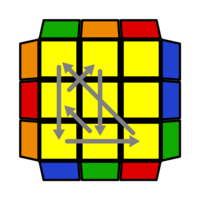 (R' U' R) y R2 u (R' U R U') (R u' R2)
(R' U' R) y R2 u (R' U R U') (R u' R2)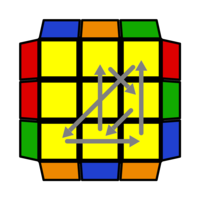 y R2' u' R U' (R U R' u) R2 y (R U' R')
y R2' u' R U' (R U R' u) R2 y (R U' R')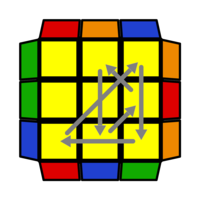 y2 (R U R') y' (R2 u' R) U' (R' U R') u R2
y2 (R U R') y' (R2 u' R) U' (R' U R') u R2
